Introduction
- The United States of America values education and believe that it is they key to a better future for individuals and the country at large (Ellsworth, 2008).
- It is due to this fact that institutions of higher education were introduced and developed in the country.
- In almost all the cities and states of the country, there are institutions of higher education that have been designed to meet the needs and requirements of individuals and the country.
- In the state of Georgia, there are several institutions of higher education that have been established to meet the post secondary needs of the community.
- The system of higher education that the state has embraced is large and the citizens of the state believe that it is effective, efficient, rigorous.
- This is essential as it gives individuals the chance to shape their careers; a key requirement for economic growth and sustainability.
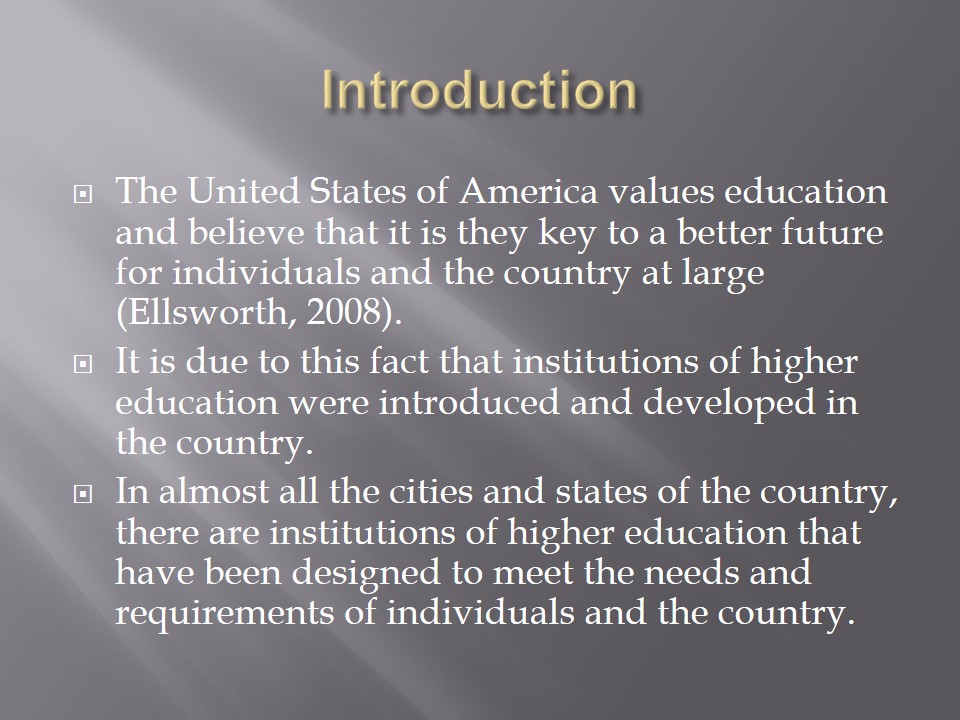
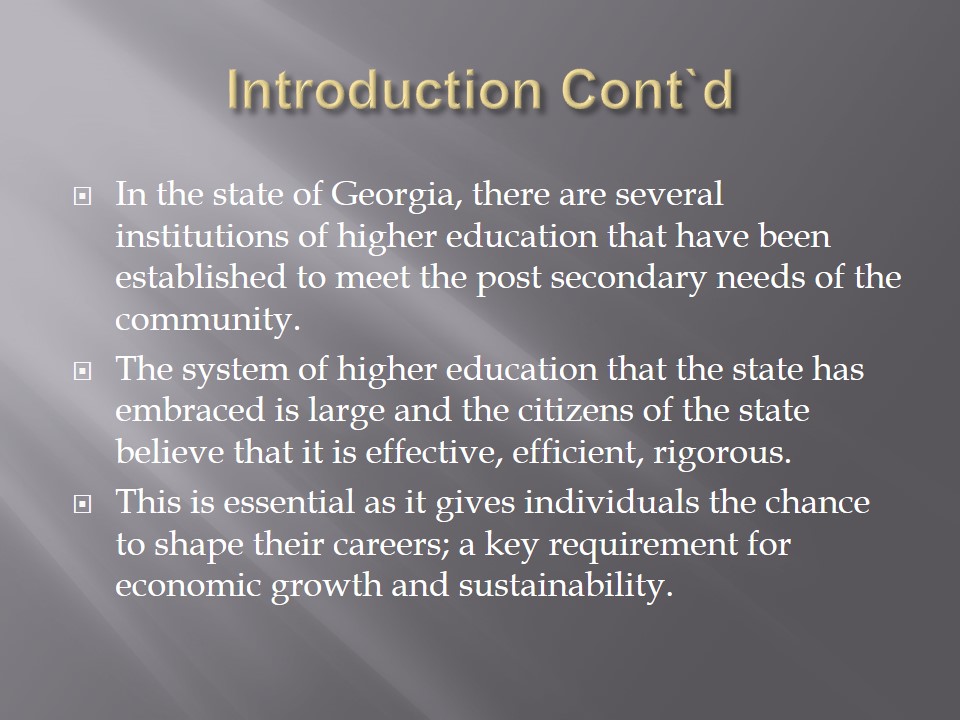
Post Secondary Institutions
- Georgia has a variety of post secondary institutions.
- These institutions range from universities, colleges and technical training institutes.
- While universities and colleges within the state impart knowledge to students that may lead them into multiple careers, institutions such as culinary schools train students to be professionals on specific fields.
- The following are some of the institutions of post secondary education that are present in the state of Georgia:
- Emory University;
- Georgia Institute of Technology;
- University of Georgia;
- Art Institute of Colorado;
- Faulkner State Community College;
- Culinard;
- Christian International School of Healthcare Professions;
- Adam International University;
- American College of Education;
- Remington College.

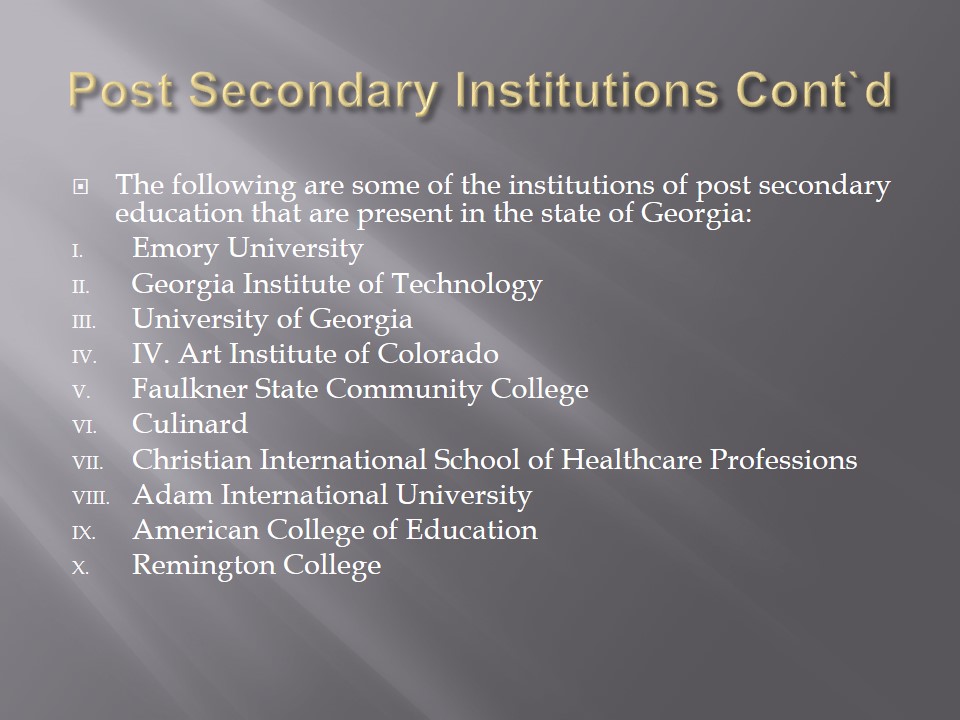
Demography
- The state of Georgia accommodates a high number of students in its post secondary institutions.
- These students come from within the state of Georgia and other states of the country.
- There are also international students in these institutions.
- The total number of students who are currently enrolled in post secondary education within the state of Georgia is 978,810 (Tobin and Kincheloe, 2010).
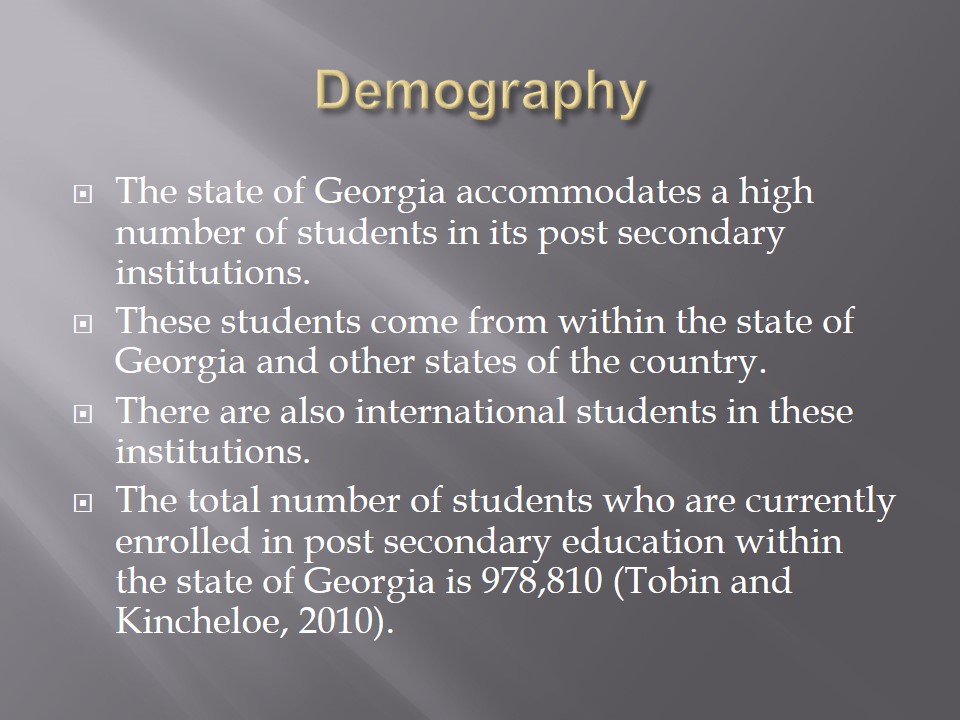
Graduation Rates
- A high proportion of the students who enroll into post secondary institutions ion Georgia complete their courses and graduate.
- Georgia has a total of 183 institutions of higher education.
- Of these institutions, one can get an associate degree from 101 of them, a bachelors degree from 64 and graduate degree from 45 of them (Therlin, 2009).
- Students can also graduate with certificates and diplomas.
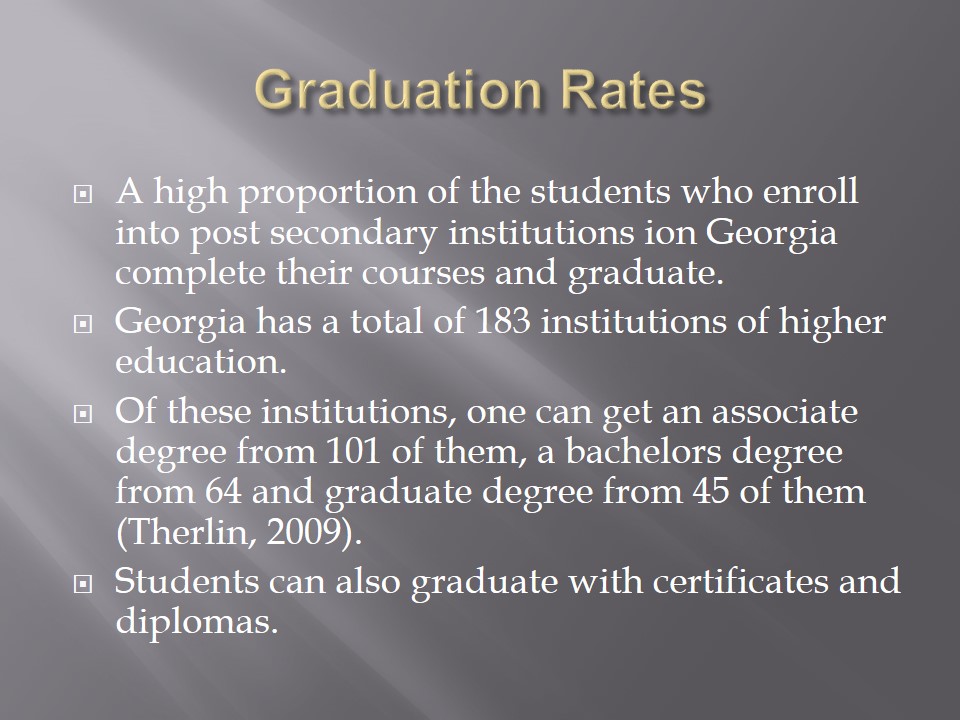
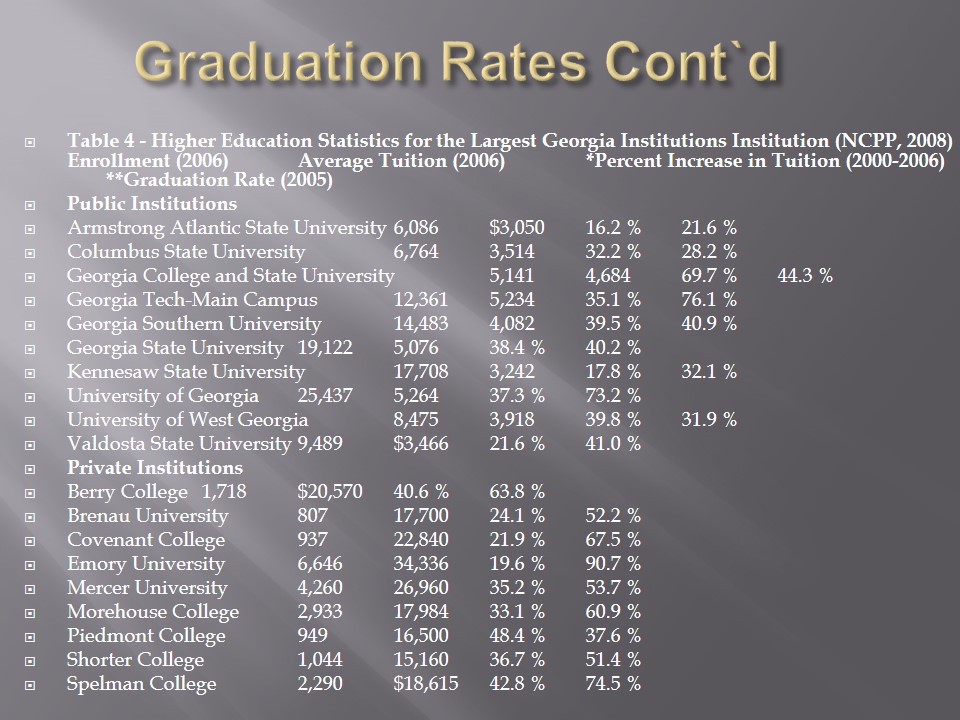
Conditions of Post Secondary Education in Georgia
- The status of post secondary education in Georgia is high.
- This education like in many other states is expensive for working and poor families to afford. Instate students pay approximately $4,000 while put of state students pay approximately $15,000 for bachelor programs (Vedder and Robe, 2009).
- In addition, students from all races and backgrounds are found in these institutions.
- However, the state has a low admission rate of young adults as compared to other states in the country (Iowa and Texas for instance).
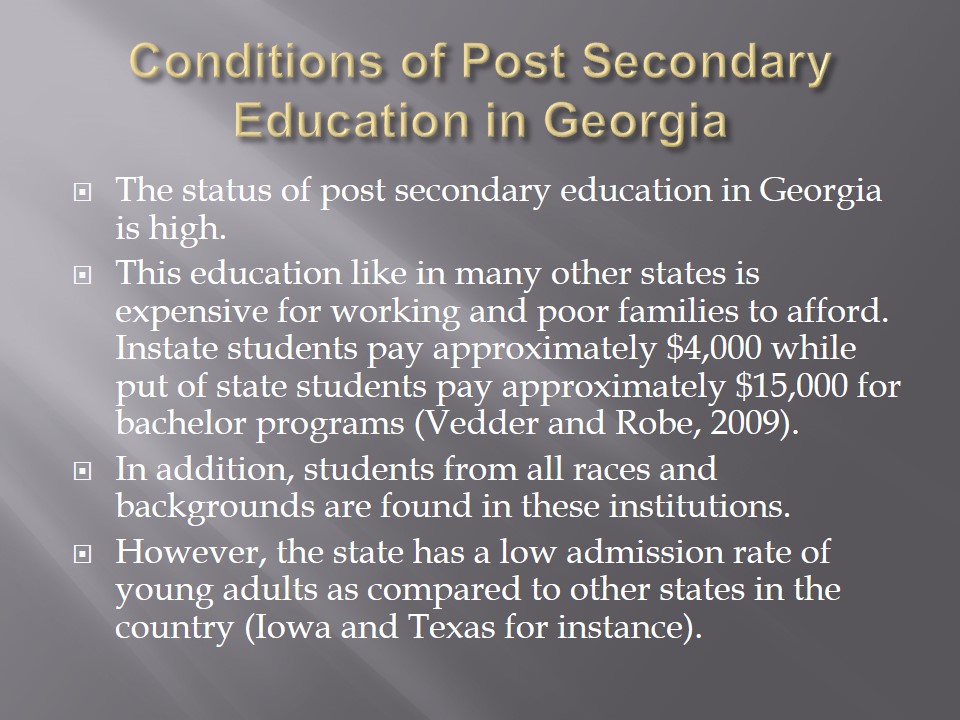
Comparison With National Averages
- To compare the status of post secondary education in Georgia, five constrains shall be examined. These include preparation, affordability, participation, completion and benefits.
- Georgia had a C+ on preparation;
- It had a D- on participation;
- An F on affordability;
- B- in completion;
- B on benefits.

Conclusion
Higher education in Georgia is essential as it gives individuals the chance to develop their careers leading to the growth and development of the economy.
The results presented by the Measuring Up 2008 report are true since affordability of education has become as issue, a relatively high numbers of students do not complete their studies but those who do benefit a lot from it.
The statistics presented by the report thus present a true and fair view of post secondary education in Georgia and USA at large.

References
Ellsworth, E. (2008). Places of Learning: Media, Architecture, Pedagogy. New York: Routledge
NCPP (2008). Measuring Up 2008: A National Report Card on Higher Education. Web.
Therlin, J.R. (2009). A History of American Higher Education. New York: Pearson Custom
Tobin, K. and Kincheloe, J. (2010). Doing Educational Research: A Handbook. Rotterdam: Sense.
Vedder, R. and Robe, J. (2009). Georgia Higher Education System: Success or Failure. Web.